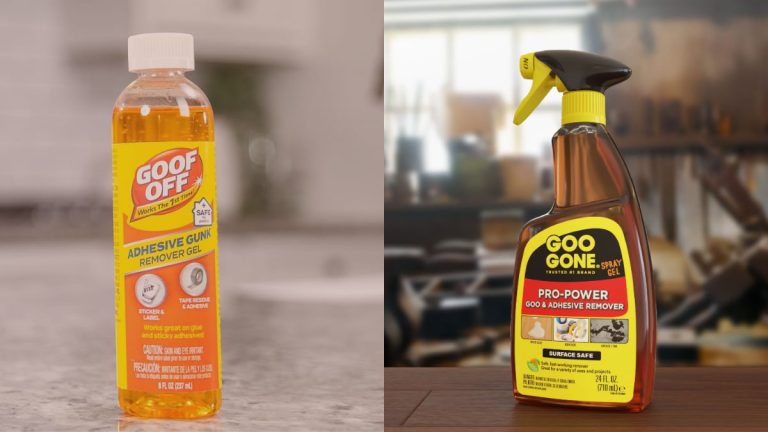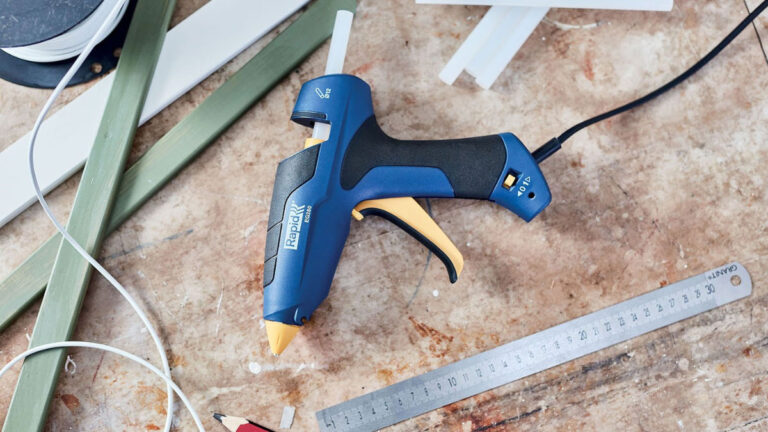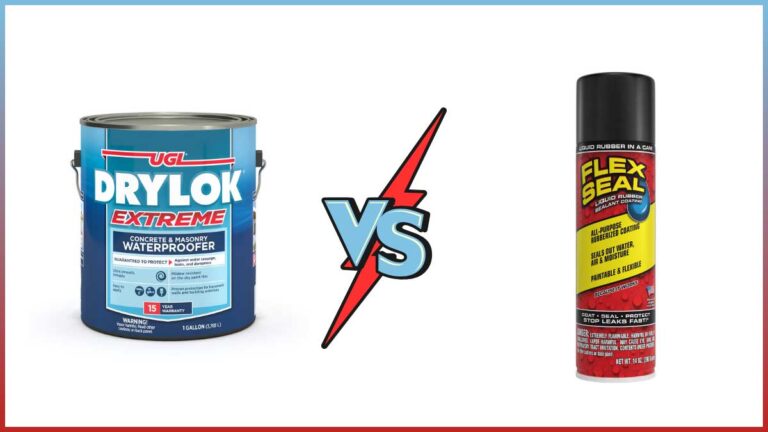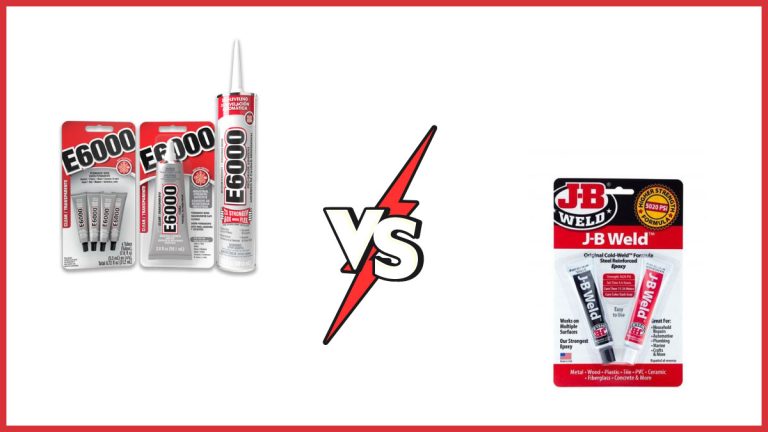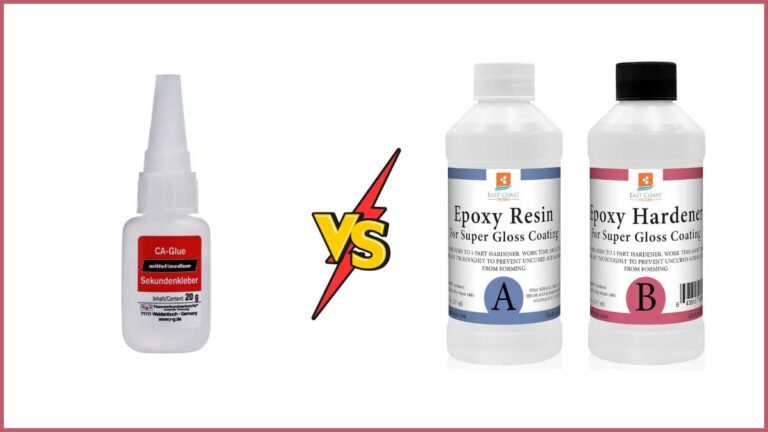What Adhesive Sticks to Silicone: Best Options for Strong Bonds
Ever tried to fix or bond something made of silicone only to find that most adhesives just won’t stick? You’re not alone. Silicone’s non-porous, flexible nature makes it incredibly useful for everything from kitchen tools to medical devices, but it also presents a unique challenge when it comes to finding the right adhesive.
Understanding which adhesives work best with silicone can save you time and frustration. Whether you’re tackling a DIY project or a professional repair, knowing the right products can make all the difference. Let’s jump into the world of adhesives that actually stick to silicone and discover what makes them effective.
Key Takeaways
- Silicone-Specific Adhesives: Silicone-based adhesives, like Room-Temperature-Vulcanization (RTV) silicones, are highly effective for bonding silicone due to their excellent compatibility, flexibility, and durability.
- Epoxy and Cyanoacrylate Options: Epoxy adhesives can form strong bonds after proper surface preparation, while cyanoacrylate adhesives (super glues) may require an adhesion promoter or primer to bond effectively with silicone.
- Pressure-Sensitive Adhesives (PSA): High adhesion silicone adhesive tapes provide robust bonds without primers and endure various environmental stresses, making them convenient for both household and industrial applications.
- Surface Preparation: Cleaning, roughening, and priming the silicone surface are crucial steps to enhance bonding strength and ensure the adhesive adheres properly.
- Common Mistakes: Avoid skipping surface preparation, using incorrect primers, choosing the wrong adhesive, and rushing the curing process as these can weaken the bond and lead to failure.
- Environmental Considerations: Ensure optimal bonding conditions by maintaining moderate temperature and humidity levels during adhesive application and curing.
Understanding Silicone and Adhesives
Silicone rubber presents unique challenges when it comes to bonding. It’s crucial to understand these challenges and the specialized adhesives available to ensure a successful application.
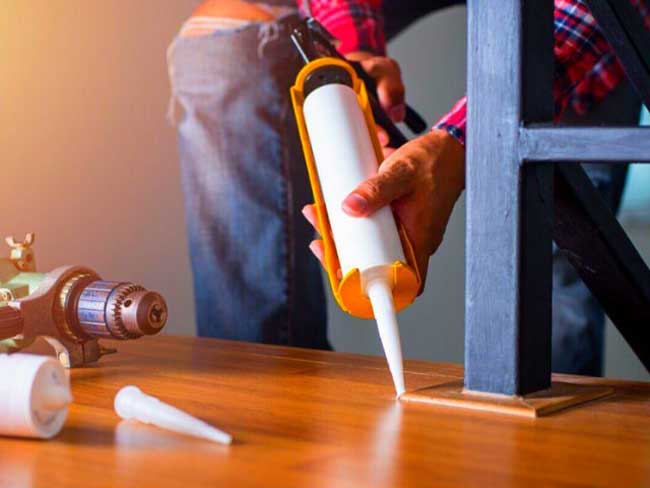
What Makes Silicone Difficult to Bond?
Silicone’s unique properties create bonding challenges:
- Low Surface Energy: With surface energy levels similar to Teflon, silicone resists adhesive wetting. Substances like water run off rather than adhering.
- Non-Stick Characteristics: Silicone’s elastomeric nature gives it non-stick qualities, preventing most adhesives from forming strong bonds.
- Mechanical Bonding Issues: Silicone doesn’t interface directly with other substrates. It depends on adhesive systems or pressure-sensitive adhesives (PSA).
Overview of Adhesive Options
To address these bonding challenges, several specialized adhesives are designed to bond silicone effectively:
- Silicone-Based Adhesives: These are designed specifically to bond silicone to silicone or other substrates.
- Epoxy Adhesives: High-strength epoxy adhesives can bond silicone after proper surface preparation.
- Cyanoacrylate Adhesives: Known as superglues, they can bond silicone when an adhesion promoter or primer is used.
- Pressure-Sensitive Adhesives (PSA): These adhesives rely on pressure to bond and can be effective with a suitable primer.
Optimizing the bonding process begins with selecting the appropriate adhesive and understanding the properties of silicone that pose bonding challenges.
Types of Adhesives That Stick to Silicone
Choosing the right adhesive is crucial for successfully bonding silicone. Here, we’ll cover several effective options to make your task easier.
Silicone-Based Adhesives
Silicone adhesives, specifically Room-Temperature-Vulcanization (RTV) silicones, make an excellent choice for bonding silicone.
- RTV Silicones: These adhesives cure at room temperature, forming a durable bond with silicone surfaces. Their chemical compatibility ensures strong adhesion and flexibility, making them suitable for various applications, from home repairs to industrial uses.
- Advantages: Excellent compatibility, flexibility, and durability.
- Example: Using RTV silicone ensures a reliable bond, often recommended for sealing, gasket making, and electronics.
Primer-Based Adhesives
Using a primer can significantly enhance the bonding strength of adhesives on silicone.
- PARFIX System: This involves applying PARFIX 3770 primer followed by an instant adhesive like PARFIX 1000. This sequence creates a robust bond.
- Advantages: Improved adhesion, easy application.
- Example: Ideal for quick repairs where time is of the essence.
- Permabond POP Polyolefin Primer: This primer prepares silicone surfaces, allowing cyanoacrylate adhesives to adhere effectively.
- Advantages: Enhanced bond strength with cyanoacrylate adhesives, versatile use.
- Example: Perfect for detailed or precision work requiring instant bonding.
Silicone Adhesives
Choosing the right adhesive forms a critical part of bonding silicone. Silicone-based adhesives, like RTV (Room-Temperature-Vulcanization) silicones, excel in bonding with silicone surfaces. These adhesives cure at room temperature and form a strong, flexible bond.
- Apply RTV Silicone: Ensures excellent adhesion and flexibility.
- Use with Various Surfaces: Suitable for plastics, metals, and glass.
- Ideal for Multiple Applications: Works well in sealants, gaskets, and electrical insulation.
| Adhesive Type | Key Benefits | Ideal Applications | Example Products |
|---|---|---|---|
| RTV Silicone | Excellent compatibility | Sealing, gasket making, electronics | Common RTV Silicone Brands |
| PARFIX System | Strong, instant bond | Quick repairs, bonding difficult surfaces | PARFIX 3770 & PARFIX 1000 |
| Permabond Primer | Enhanced bond strength | Precision work, detailed repairs | Permabond POP, Cyanoacrylate |
Understanding these types of adhesives allows you to choose the best option for your specific needs. Each category offers distinct advantages, ensuring you can confidently tackle any silicone bonding challenge.
Epoxy Adhesives
Epoxy adhesives, known for their strong bonding capabilities, offer a reliable solution for bonding silicone rubber. When used with silicone, they can create both durable and flexible bonds, depending on the formulation.
Advantages and Limitations
Advantages:
- Strong Bonding: Epoxy adhesives provide exceptional bonding strength suitable for various applications.
- Versatility: They adhere well to multiple substrates, including silicone, metals, and plastics.
- Chemical and Temperature Resistance: They withstand harsh chemicals and high temperatures, making them ideal for industrial use.
Limitations:
- Surface Preparation: Proper surface cleaning and roughening are crucial; otherwise, the bond may not be effective.
- Curing Time: Some epoxy adhesives may require significant curing time, which could delay project completion.
- Flexibility: Standard epoxy adhesives may lack the flexibility needed for high-movement joints, though certain formulations exist to address this.
When selecting an epoxy adhesive for silicone, specific product formulations and application methods should be considered to maximize effectiveness.
Cyanoacrylate Adhesives
Cyanoacrylate adhesives, often referred to as super glues, are known for their swift bonding times, which can streamline your projects.
Advantages and Limitations
Advantages:
- Rapid Bonding: Cyanoacrylate adhesives cure quickly, allowing you to achieve a fast bond, which is ideal for time-sensitive tasks.
- Ease of Use: These adhesives apply easily without needing extensive surface preparation, making them user-friendly.
Limitations:
- Surface Preparation: While application is straightforward, achieving a reliable bond often requires cleaning and occasionally using a primer to prepare the surface.
- Bond Strength: These adhesives provide strong bonds with many materials, yet they may not adhere well to silicone due to its low surface energy. This can result in weaker bonds that degrade over time.
| Attributes | Details |
|---|---|
| Bond Time | Very fast, often within seconds |
| Surface Preparation | Often needed, including cleaning and primer application to ensure effectiveness |
| User Accessibility | High, due to easy application |
| Adhesion to Silicone | Moderate, usually requires surface treatment |
| Long-term Durability | Variable, tends to weaken over time when used on silicone |
Utilizing Cyanoacrylate Adhesives on Silicone
- Clean: Ensure the surface is clean and free of contaminants.
- Apply Primer: Use a silicone-compatible primer if necessary to improve adhesion.
- Apply Adhesive: Dispense a small amount of cyanoacrylate adhesive onto the surface.
- Press and Hold: Join the surfaces and maintain pressure until the adhesive sets, usually within seconds.
Understanding the properties and limitations of cyanoacrylate adhesives enhances your ability to work efficiently on silicone bonding projects.
Pressure Sensitive Adhesives
Pressure Sensitive Adhesives, or PSAs, offer versatile solutions for bonding silicone surfaces. They provide reliable adhesion without needing primers or extensive surface preparations.
High Adhesion Silicone Adhesive Tapes
Definition: High adhesion silicone adhesive tapes are specifically designed to bond with silicone. They feature a silicone adhesive coated onto a backing material like polyester or polyimide film.
Mechanism: Silicone adhesives bond effectively to silicone surfaces by filling into surface topography and creating intermolecular forces known as van der Waals forces. This results in a robust, durable bond.
Advantages and Limitations
Advantages:
- Primerless Bonding: These tapes eliminate the need for primers or additional chemical treatments.
- High Cohesion: They offer internal strength and flexibility, providing reliable performance.
- Environmental Performance: They endure thermal cycles, UV exposure, chemical attacks, vibrations, and deformations.
Limitations:
- Cost: High adhesion silicone adhesive tapes can be more expensive than other adhesives due to specialized formulations.
- Surface Specific: They mainly bond to silicone surfaces, limiting their versatility across different materials.
| Feature | High Adhesion Silicone Adhesive Tapes |
|---|---|
| Primerless Bonding | Yes |
| Cohesion Strength | High |
| Environmental Endurance | Thermal, UV, Chemicals, Vibrations |
| Cost | Higher than general adhesives |
| Versatility | Primarily silicone surfaces |
By utilizing PSAs like high adhesion silicone adhesive tapes, you can achieve effective bonding on silicone surfaces without additional treatments, ensuring both robust performance and environmental resilience.
Specialized Adhesion Techniques
Bonding silicone requires specialized techniques due to its non-stick properties and low surface energy. Leveraging the right methods enhances adhesion, ensuring the success of your project.
Surface Preparation Methods
Proper surface preparation is essential for achieving a strong bond with silicone. Cleaning, roughening, and priming the surface can significantly enhance adhesive performance.
- Cleaning: Remove any contaminants such as oils, dust, or residues using a solvent like isopropyl alcohol. This ensures the adhesive contacts the silicone directly.
- Roughening: Lightly abrading the silicone surface with fine-grit sandpaper increases the surface area, facilitating better adhesion. Avoid over-sanding to prevent damage.
- Priming: Apply a silicone-compatible primer to improve surface energy and bond strength. Allow the primer to dry completely before applying the adhesive.
Adhesion Promoters and Primers
Using adhesion promoters and primers is critical for enhancing adhesive performance on silicone surfaces. These products modify the surface properties of silicone, making it more receptive to bonding.
- PARFIX 3770 and PARFIX 1000: Apply PARFIX 3770 primer to the silicone surface. Once dry, apply PARFIX 1000 instant adhesive. This combination provides a strong, durable bond.
- Poly Prep and Activator/Accelerator (AA): Use Poly Prep as an adhesion promoter. After applying, use an Activator/Accelerator to enhance bonding. Warming the surfaces and applying firm pressure will further improve adhesion.
Pressure Sensitive Adhesives (PSA)
Pressure Sensitive Adhesives (PSAs) offer a practical solution for bonding silicone without primers. High adhesion silicone adhesive tapes are specifically designed for this purpose.
- High Adhesion Silicone Tapes: These tapes bond effectively by conforming to silicone surfaces and establishing intermolecular forces. They offer high cohesion, environmental resistance, and durability.
- Application Benefits: PSAs are versatile and easy to use. They provide robust performance against thermal cycles, UV exposure, and vibrations, making them ideal for many applications.
Further details and clear steps help streamline the bonding process, ensuring strong and lasting bonds with silicone.
Applications and Use Cases
Household and DIY Repairs
Understanding which adhesives bond well with silicone is crucial for successful household and DIY repairs. Two primary categories of adhesives fulfill this need effectively: Pressure Sensitive Adhesives (PSA) and Specialized Adhesives.
Pressure Sensitive Adhesives (PSA)
Pressure Sensitive Adhesives (PSA) are particularly suitable for household repairs. These adhesives don’t require additional chemical treatments or primers.
- Double-Sided Tapes: These tapes feature a silicone adhesive on one side and an acrylic adhesive on the other. They can bond silicone to materials like plastic, metal, or wood seamlessly. For instance, using a double-sided tape can effectively attach a silicone pad to a wooden table leg.
Specialized Adhesives
Specialized adhesives offer robust bonds for more demanding applications. These adhesives often need additional surface preparation steps.
- RTV (Room-Temperature-Vulcanization) Silicones: RTV silicones are versatile and bond silicone to itself or other materials. You’ll need to clean and roughen the surfaces for optimal results. For example, RTV silicones can repair a torn silicone baking mold.
- Acrylic-Based Adhesives: When used with a primer, acrylic-based adhesives offer effective bonding. For example, these can bond silicone seals to glass surfaces.
Industrial and Commercial Applications
In industrial and commercial settings, bonding silicone requires high-performance adhesives for durability and efficiency.
Pressure Sensitive Adhesives (PSA)
PSAs are adaptable for various industrial applications due to their strong adhesion and ease of use.
- High Adhesion Silicone Tapes: Designed specifically for silicone surfaces, these tapes provide robust bonds without primers. They endure environmental stresses like thermal cycles and UV exposure. For instance, these tapes are ideal for securing silicone components in automotive manufacturing.
Specialized Adhesives
In commercial contexts, specialized adhesives ensure strong and durable bonds that withstand rigorous conditions.
- RTV Silicones: These adhesives are extensively used in industries requiring high-temperature resistance and flexibility. Industrial settings use them for sealing and insulation in electronics.
- Acrylic-Based Adhesives: These adhesives offer good adhesion when paired with primers. They are often used in the construction industry for sealing silicone-based joints.
| Adhesive Type | Use Case Example | Surface Preparation Needed | Durability |
|---|---|---|---|
| Double-Sided Tapes (PSA) | Bonding silicone to wood or metal | No | Moderate |
| High Adhesion Silicone Tapes | Securing silicone in automotive parts | No | High |
| RTV Silicones | Repairing silicone baking molds | Cleaning, Roughening | High |
| Acrylic-Based Adhesives | Sealing silicone joints in construction | Use of Primer | High |
Optimizing the bond between silicone and other materials enhances both functionality and longevity of your projects. Choose the right adhesive to ensure effective results tailored to your needs.
Tips and Best Practices
To achieve reliable bonding with silicone surfaces, it’s essential to follow tried-and-tested tips and best practices. These guidelines ensure you create strong, lasting bonds efficiently.
Ensuring Strong Bonds
-
Surface Preparation:
- Clean with Solvents: Use isopropyl alcohol or acetone to remove oils and contaminants from the silicone surface before applying adhesive.
- Roughen the Surface: Lightly sand the area with fine-grit sandpaper (200-300 grit) to create a better bonding surface by increasing surface area.
-
Using Primers:
- Apply Silicone-Compatible Primers: Products like PARFIX 1000 and PARFIX 3770 enhance adhesion by increasing surface energy. Ensure you follow the primer’s instructions for optimal results.
-
Choosing the Right Adhesive:
- Match Adhesive Type: Use the appropriate adhesive based on your specific needs. For example, RTV silicones for high flexibility or PSA tapes for convenience and quick application.
-
Application Techniques:
- Apply Evenly: Ensure uniform adhesive coverage over the bonding area to prevent weak spots.
- Adequate Curing Time: Allow adhesives to fully cure based on manufacturer guidelines to achieve maximum strength. For instance, RTV silicones may need up to 24 hours.
-
Environmental Considerations:
- Temperature and Humidity: Adhesive performance can depend on environmental factors; ideal conditions often include moderate temperature (50-75°F) and humidity level (40-60%).
Common Mistakes to Avoid
-
Skipping Surface Preparation:
- Never apply adhesive to untreated surfaces. Contaminants and smooth surfaces hinder bonding strength.
-
Incorrect Primer Use:
- Avoid using primers not specifically designed for silicone, which may result in weak bonds or no adhesion.
-
Wrong Adhesive Selection:
- Don’t use general-purpose adhesives; always choose ones tested for silicone like 3M 9699 silicone tape or PARFIX adhesives.
-
Uneven Adhesive Coverage:
- Inconsistent application of adhesive can cause bond failure. Ensure a uniform layer to distribute stress evenly.
-
Ignoring Curing Times:
- Don’t rush the curing process. Premature handling can weaken the bond and create adhesive failure.
Adhering to these tips and avoiding common mistakes significantly improves the bonding efficiency, ensuring that your silicone projects are durable and reliable.
| Parameter | Description | Best Practice | Common Mistake |
|---|---|---|---|
| Surface Cleaning | Cleansing surface to remove impurities | Use isopropyl alcohol or acetone | Using water or general cleaners |
| Surface Roughening | Sanding to increase bonding area | Use fine-grit sandpaper (200-300 grit) | Skipping sanding or using coarse sandpaper |
| Primer Application | Enhancing surface energy for better bond | Use silicone-compatible primers like PARFIX | Using generic primers |
| Adhesive Selection | Choosing correct adhesive for the task | RTV silicones or PSA tapes for silicone | Using non-specific adhesives |
| Adhesive Application | Ensuring uniform coverage | Apply a consistent layer | Applying uneven layers |
| Curing Time | Allowing sufficient time for adhesive to cure | Adhere to manufacturer guidelines (e.g., 24-hour curing for RTV silicones) | Handling before full curing |
| Environmental Factors | Considerations for optimal bonding | Maintain moderate temperature (50-75°F) and humidity (40-60%) | Ignoring temperature and humidity |
By following these guidelines, you can ensure strong, lasting bonds with silicone, making your projects more efficient and effective.
Conclusion
Successfully bonding silicone requires understanding its unique properties and choosing the right adhesive. By following proper surface preparation techniques and selecting suitable adhesives like RTV silicones, epoxy, cyanoacrylate, and PSAs, you can achieve strong, durable bonds. Remember to clean and prime surfaces, apply adhesives evenly, and allow adequate curing time. Avoid common mistakes to ensure your projects are efficient and effective. With these tips, you’ll be well-equipped to tackle any silicone bonding challenge.
Frequently Asked Questions
What is the main challenge when bonding silicone?
Silicone is non-porous and flexible, making it difficult for most adhesives to adhere effectively. Its low surface energy and non-stick characteristics further contribute to bonding challenges.
Which adhesives are best for bonding silicone?
Silicone-based adhesives (like Room-Temperature-Vulcanization RTV silicone), epoxy adhesives, cyanoacrylate adhesives, and pressure-sensitive adhesives (PSAs) are specialized options that work effectively with silicone.
Do you need to prepare the surface before bonding silicone?
Yes, proper surface preparation is crucial. Clean the surface with solvents, roughen with fine-grit sandpaper, and apply silicone-compatible primers to enhance bond strength.
Can super glue successfully bond silicone?
While cyanoacrylate (super glue) can be used, it may not adhere well to silicone due to its low surface energy. Using a primer can improve results, but bonds may still degrade over time.
Are there any tapes that can bond silicone surfaces?
Yes, high adhesion silicone adhesive tapes, often categorized as Pressure Sensitive Adhesives (PSAs), are designed to effectively bond silicone by filling into surface topography and creating a strong bond.
What are the advantages of using epoxy adhesives on silicone?
Epoxy adhesives offer strong, durable bonds with excellent chemical and temperature resistance. However, proper surface preparation and sometimes lengthy curing times are required.
How do silicone-based adhesives, like RTV silicones, work?
RTV silicones cure at room temperature and provide excellent compatibility with silicone surfaces. They are flexible and durable, making them suitable for various applications.
What should you avoid when bonding silicone?
Avoid skipping surface preparation, using incorrect primers, and neglecting the recommended curing times. These mistakes can lead to weak or ineffective bonds.

